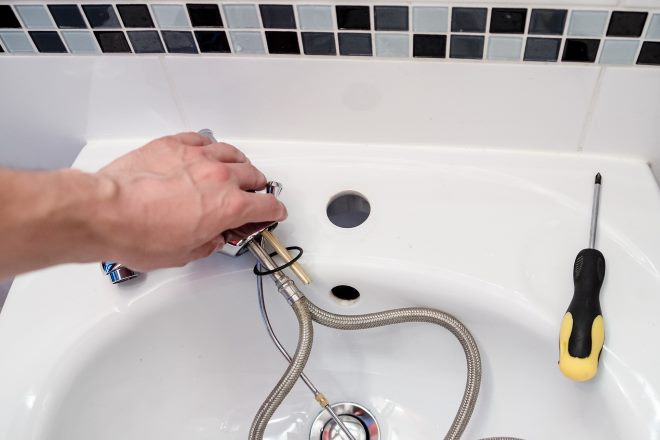4 Common Plumbing Problems & How to Fix Them
We’ve all run into leaky faucets, a toilet that won’t stop running, or a shower that backs up. A plumbing issue now may lead to greater difficulties down the line. But when do we know if a plumbing problem is common or in need of a professional? Knowing the signs and some simple fixes can ease stress when dealing with your next plumbing issue. Here are 4 common plumbing problems and how to fix them.

1 - Flange Leaks
One of the more common plumbing problems in which homeowners call professional plumbing services for is when water leaks from the base of the toilet. You may also notice that the toilet rocks slightly when pushed from side to side. This could be due to a leaking flange.
Start this leak repair by emptying the toilet of water. On the back of your toilet, along the wall and underneath the tank, you can find a water shut off valve. Twist it to turn the water off and flush the toilet to empty the toilet. Unscrew the bolts that hold the toilet to the ground. Once the bolts have been removed, lift the toilet out of place and set it aside. Scrape and clean all of the loose wax or existing wax left behind.
At this point, you should see the flange in the ground and determine whether or not it’s damaged. If you see no crack and the flange looks fine, you can replace the wax gasket and reinstall the toilet. Tighten the bolts tight to ensure no movement of the toilet. If you do see a crack, the flange needs to be replaced. Remove the flange and take it to your local hardware store. Purchase a duplicate and install with a new wax gasket. Reinstall the toilet, turn the water supply back on, and voila, problem solved.
2 - Sink Supply Leaks
The lines that supply water to the faucets in our sinks at home can degrade over time. You may notice a few drops to start but it can quickly build to a pool in no time. To start this leak repair take a look at the supply lines. These are the lines that connect the water supply to the sink itself. If you see a noticeable leak around the nuts and bolts of the connection hardware try to give them a tighten. If this doesn’t work, the supply line itself may need to be replaced.
Begin by turning off the water supply by locating the shut off valve underneath the sink. Use a wrench to remove the compression screws from the existing supply line. Once disconnected, remove the plumber’s tape that may be left behind. To replace, reapply new plumber’s tape to the connection and attach the new supply line hose. Make sure the connections are tight and turn the water back on. You should be good to go at this point but if there is still a problem, contacting professional plumbing services may be necessary.
3 - Sink Rim Leaks
If the leak isn’t coming from a hose but looks like it’s coming from underneath the sink bowl connecting itself to the countertop, you may have a sink rim leak. Over time, the caulking that creates a waterproof barrier between your sink and countertop may wear out. Little holes in the caulking can lead water to find its way in between the two and begin to damage the wood in your cabinets.
To repair this leak, tighten all of the nuts and bolts on your sink. If this doesn’t resolve the issue, recaulking may be necessary. It’s easy to do and you can follow the directions directly on the package.
4 - Repair Shower Leaks
A shower that leaks can be a nightmare–especially if that shower is upstairs. It’s also one of the most common plumbing problems that professional plumbing services face. But before you make the call, let’s see if we can’t solve it ourselves.
If the problem isn’t obvious, troubleshooting may be necessary. Locating the source of the leak is the most important step. Begin this leak repair by duct taping over the drain of your shower so that water can’t find its way through. Fill the shower with water until it covers the floor space. You need to let the water sit to determine if there is a leak.
If you see a leak at this point, it may be a shower floor leak. Look for cracks in the grout or tile that may be leading to water seeping out. To fix this problem, apply new grout to the areas necessary. If the grout looks good but water is still leaking, it may be a sign of a bigger problem with the shower floor and professional plumbing services may be required.
If there is no leak, remove the tape that is covering the drain. If the drain is leaking, you have discovered your problem. Replacing the drain isn’t that challenging. Remove the drain cap and look at what you’re dealing with. Take a picture to bring with you to the hardware store. They can assist in getting you the appropriate supplies. If uncomfortable replacing the drain, calling professional plumbing services may be your best bet.
As you can see, it’s easy to feel overwhelmed by a plumbing problem. Professional plumbing services may be needed for serious issues but taking charge yourself can be a rewarding experience. Looking out for the common signs of trouble and knowing the basic fixes can have you feeling like a true DIY-er.




